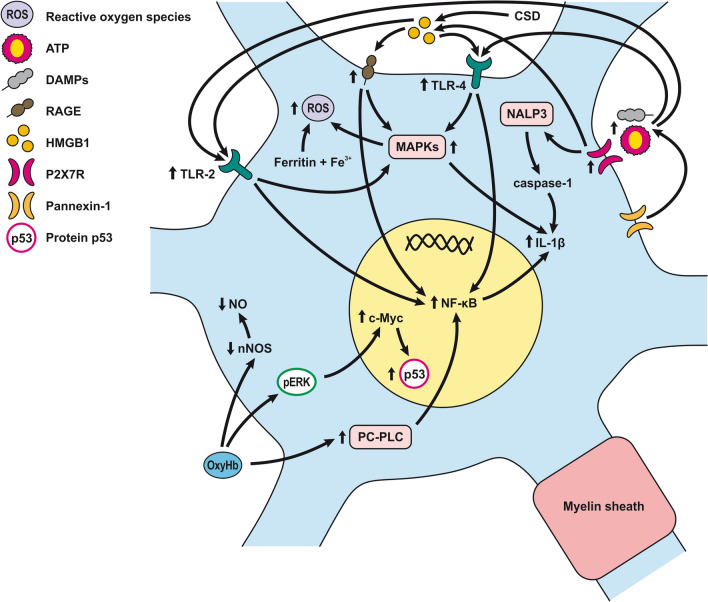Fig. 10.
Blood induced neurotoxicity. Schematic illustration of blood and DAMPs induced neurotoxicity. OxyHb leads to phosphorylation of ERK that increases the pro-apoptotic p53 through the up-regulation of c-Myc. Other effects of OxyHb, such as increased PC-PLC mediating the NF-κB signaling pathway and scavenging of NO and destruction of nNOS expressing neurons, contribute to neuronal injury and vasoconstriction of blood vessels after SAH. DAMPs, including ATP and HMGB1, interact with TLR2, TLR4, and RAGE that activate the NF-κB and the MAPK pathways resulting in neuroinflammation, development of ROS, and neuronal death. HMGB1 is released due to CSD, passively from necrotic cells and actively from cortical neurons through the stimulation of P2X7R receptors. Activation of P2X7R receptors by ATP released from Pannexin-1 leads to the activation of NALP3 and caspase-1, contributing to the development of neuroinflammation. The iron storage protein ferritin binds most non-heme iron as Fe3+ ions. This iron deposition contributes to oxidative stress and neuronal death after SAH

